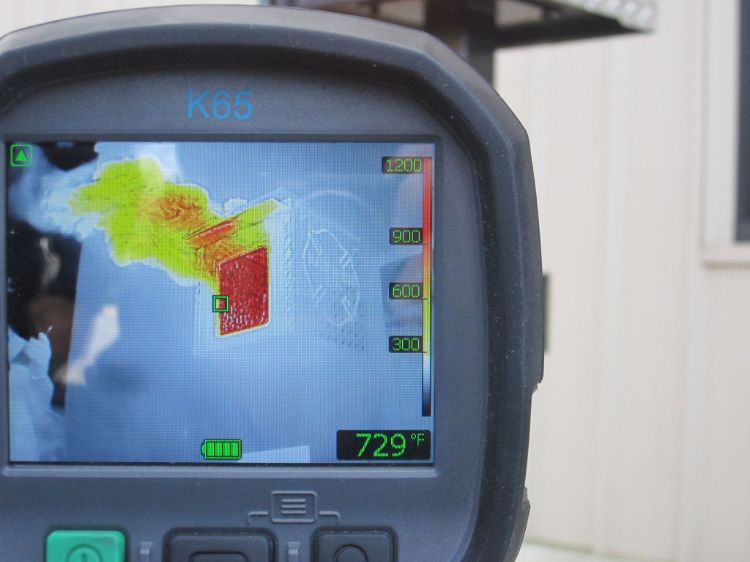What does NFPA 1801 state in regard to colorization?
Section 6.6.4.1.9
In the TI BASIC mode, the heat color reference bar shall have a color scale that includes only the following colorization:
- Grey- at the bottom of the heat color reference bar before color indication begins and shall not be more than 50 percent of the overall height of the heat color reference bar.
- Yellow- at the low end of the heat color reference bar
- Orange- in the middle of the heat color reference bar
- Red- at the high end of the heat color reference bar
This the NFPA 1801 approved color/temperature progression for thermal imaging cameras under the TI Basic Color Palette. This color/temperature progression shall be from cold to hot. This can be found in NFPA 1801 Section 6.6.4.1.9 & 6.6.4.2.3-6.6.4.2.6.
“As shown in the images below, both of these TIC’s are NFPA 1801 compliant but they vary the amount of gray scale in the lower end of the dynamic range, they both differ on what temperature the colorization engages, and at what percentage count of pixels it takes to engage low sensitivity which is when both of these NFPA 1801 compliant TIC’s show colorization. The end user must familiarize themselves with their specific TIC, when it engages colorization, and at what percentage of pixels within its Field of View to be proficient in its use.”
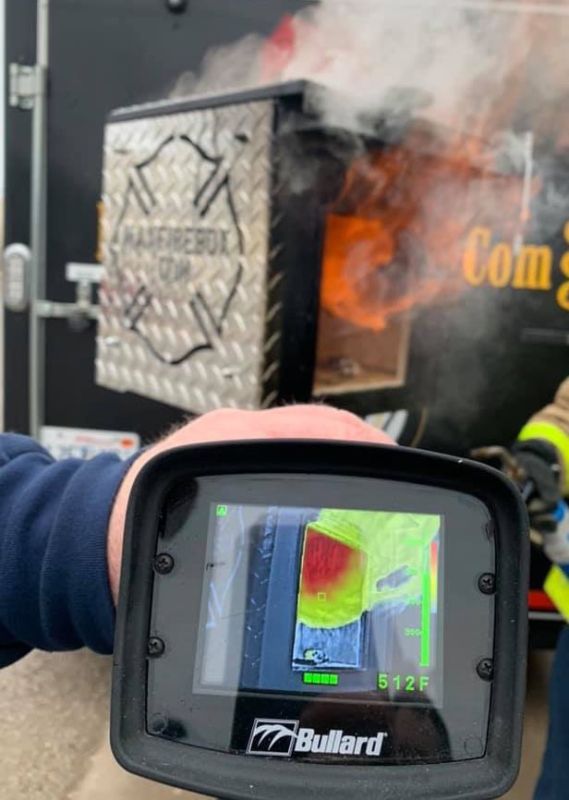
NFPA 1801 6.6.4.2.2: Colorization shall overlay the grayscale thermal images produced by the thermal imager. Details within the thermal image and within the colorized area shall remain resolvable by the user other than at saturation.
“As shown in the following image, the details within this image are resolvable through the colorization.
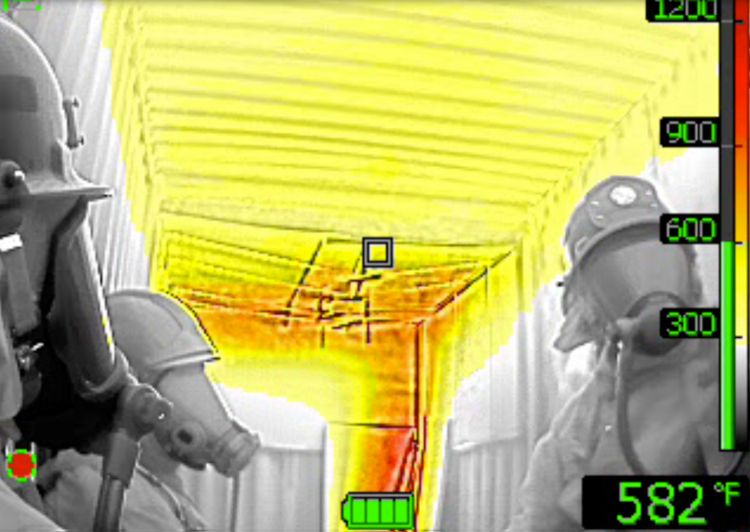
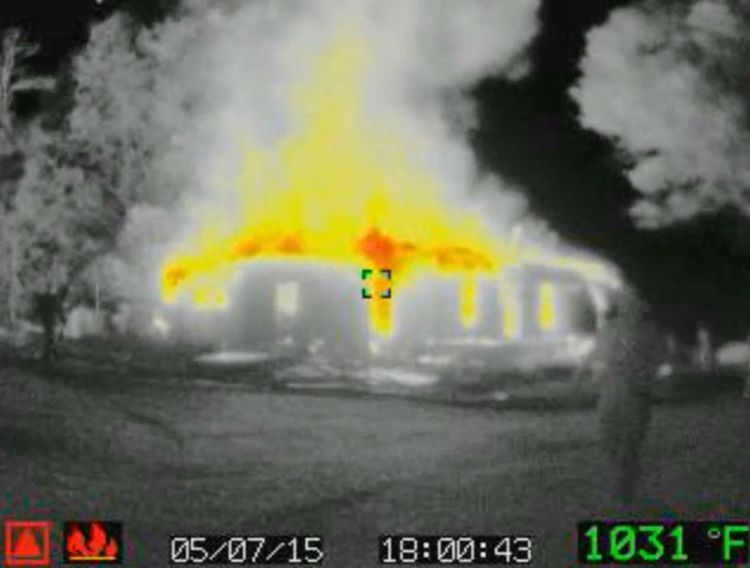
This allows for better decision making in comparison to previous infrared images such as the one shown in the image above (courtesy of Project Kill the Flashover) This image enhancement feature allows firefighters to see areas that were previously missed or not visible with a standard thermal imaging camera. Areas that are behind flames are outlined thereby allowing firefighters to see areas such as doors, victims, stairs, and holes in floors which had previously been hidden by the colorization or the lack of detail. In thermography, colorization of a specific area of interest is known as an Isotherm. According to Infrared Training Centers, an Isotherm is a “measurement tool that highlights areas of equal apparent temperature.”
Older fire service TIC’s were typically all gray scale which allowed for great definition of convection currents but left the end user to interpret far too many shades of gray. The human eye can only differentiate 30 shades of gray and only 4 under stress. Therefore, adding colorization that is transparent allows firefighters to see areas of thermal severity faster preventing unnecessary thermal insult to victims, to the contents of the structure, and preventing/predicting rapid fire development. As shown in the adjacent image, firefighters can quickly identify superheated surfaces that need to be cooled. Photo courtesy of Max Fire Training Inc.”
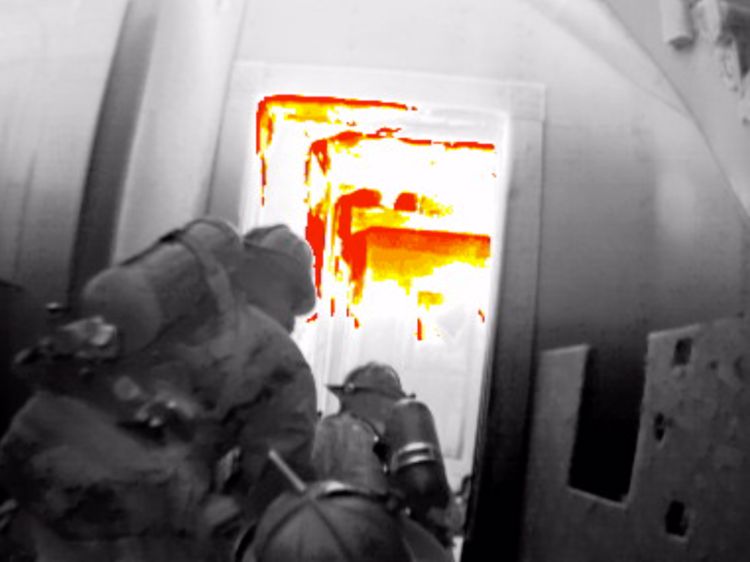
In addition to this information, firefighters need to understand when THEIR TIC SHOWS COLOR!
Just because the TIC follows TI Basic doesn’t mean it engages colorization at the same temperature. Notice the following differences in these models below:
- Seek Fire Pro X: Begins showing colorization at 302 degrees Fahrenheit.
- FLIR KXX series TIC’s begin showing colorization at 302 degrees Fahrenheit and this only occurs in Low Sensitivity.
- Bullard Series TIC’s begin showing colorization at 500 degrees Fahrenheit and this only occurs in Low Sensitivity.
- Drager UCF 7000-9000 series TIC’s show colorization begins showing colorization in 270 in High Sensitivity and then again at 570 degrees in Low Sensitivity. Red is 290 degrees Fahrenheit in High Sensitivity and in Low Sensitivity, Red is now 1500 Degrees Fahrenheit.
- MSA 6000 Series TIC’s show colorization in both high and low sensitivity. It begins at 270 in High Sensitivity and when it switches to Low Sensitivity it will not show colorization until 1000 degrees Fahrenheit.
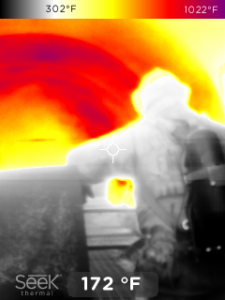
Therefore, it is imperative for firefighters to understand that they learn THEIR specific model of Fire Service TIC as each of these vary when they show colorization. And last but not least, firefighters need to be aware that the absence of color isn’t the absence of heat! If they see fast moving gray scale convection currents moving over them, this is not to be ignored, as this is HOT!
Check out our YouTube Channel for examples of this at the following link:

